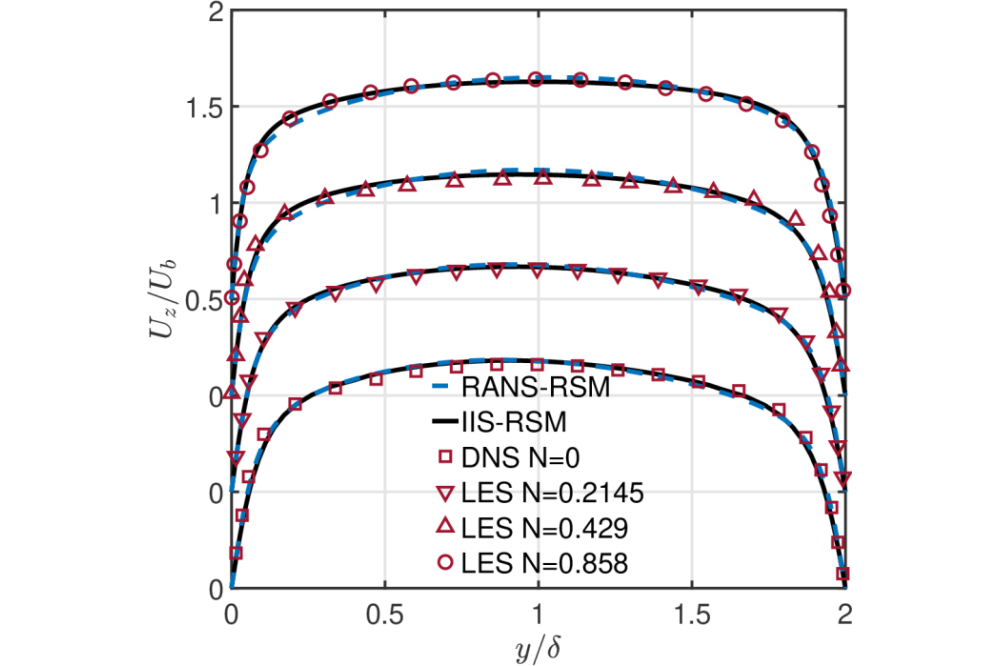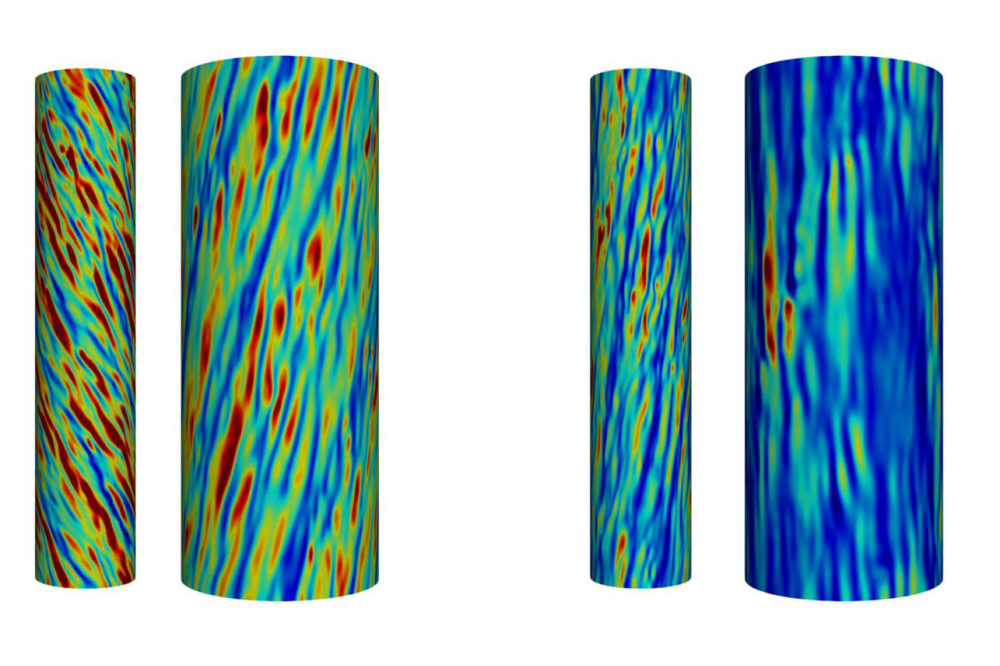Flow in Concentric Annulus with Inner- or Outer-Cylinder Rotation: A Conventional and Sensitized RANS Modelling Study
Introduction
Fully developed turbulent flow in a concentric annulus with one or both walls rotation is essential in various engineering applications, such as heat exchangers, chemically reactive mixers, journal bearings and turbomachinery. Over the past decades, various DNS and LES studies were performed to provide a better understanding of the concentric annulus-related turbulence and the rotating effect on the turbulence structures. However, even large-eddy simulations (LES) are deemed to be barely feasible due to excessive resolution requirements in the case of near-wall viscous processes, which influence the main flow properties in the present configuration. The traditional RANS second-moment closure model, similar as other RANS models, with its deficiency in accuracy originating from its time-averaged theoretical rationale, produces results restricted to mean flow properties and second-order statistics without insight into flow patterns or turbulence structures. Based on the implementation within the framework of the OpenFOAM numerical code, turbulent flow in a concentric annulus with a rotating inner or outer cylinder wall was simulated by applying a differential near-wall Reynolds stress model employed within a conventional RANS (Reynolds-Averaged Navier-Stokes) framework and its unsteady eddy-resolving version to elucidate the effect of wall rotation on the near-wall structure.
Methods
A turbulent flow in a concentric annulus is computationally simulated over a range of rotational intensities pertinent to inner or outer wall rotation utilizing the finite-volume method-based OpenFOAM code, in which the model equations of the conventional RSM and its eddy-resolving counterpart IIS-RSM are implemented. The conventional, statistically steady RSM formulation models the entire turbulence spectrum resulting in a steady-state solution. The results obtained represent the time-averaged quantities of all dependent variables. In contrast, the eddy-resolving version of this model, denoted as improved instability-sensitive RSM (IIS-RSM) is capable of resolving an adequate part of the turbulence spectrum; such a model is based on the time-dependent flow quantities and hence captures the turbulent fluctuations.
Results
The velocity profiles and second-order statistics obtained by using both turbulence models show a good agreement with the reference LES data for the turbulent flow in concentric annulus with inner cylinder rotation. However, for the annular flow with outer-wall rotation, the axial velocity distribution tends to be prematurely laminar at higher rotation rates despite the satisfactory agreement of the conventional RANS results with the LES data at the lower rotation rates. In contrast, the premature relaminarization could be avoided by the application of the IIS-RSM, where the velocity profiles at all rotation rates considered show close qualitative and quantitative agreement with the LES data.
Discussion
A further insight into the influence of the rotation on the flow structure within the concentric annulus is provided by visualizing the iso-contours of the instantaneous axial velocity field. The qualitatively similar pattern is observed in both rotating cases in the vicinity of both walls. On the other hand, some obvious differences can be in particular recognized in the region close to the wall, where the strength and inclination of the streaks are much more intense in the flow with inner-cylinder rotation in comparison with the case with outer-wall rotation, representing an indication of the destabilizing effect of the inner wall rotation. Apart of the effect of the rotation intensity on the turbulent flow structure in the concentric annulus, the influence of the variation of inner-to-outer radius ratio and the Reynolds number is also of interest; this requests further investigation to evaluate the predictive performance of the present turbulence models in conjunction with some widely-used heat transfer models listed in the literature.





